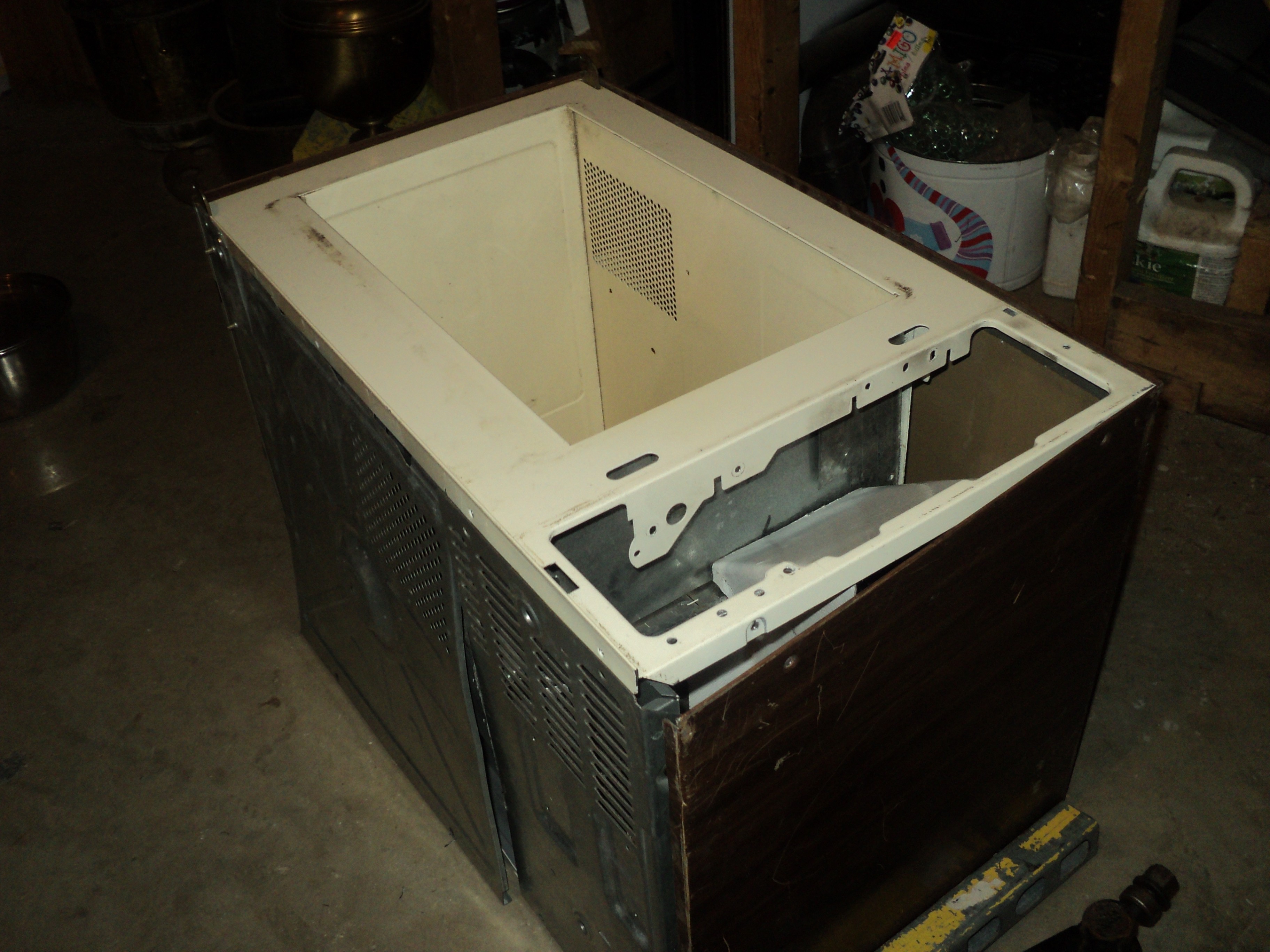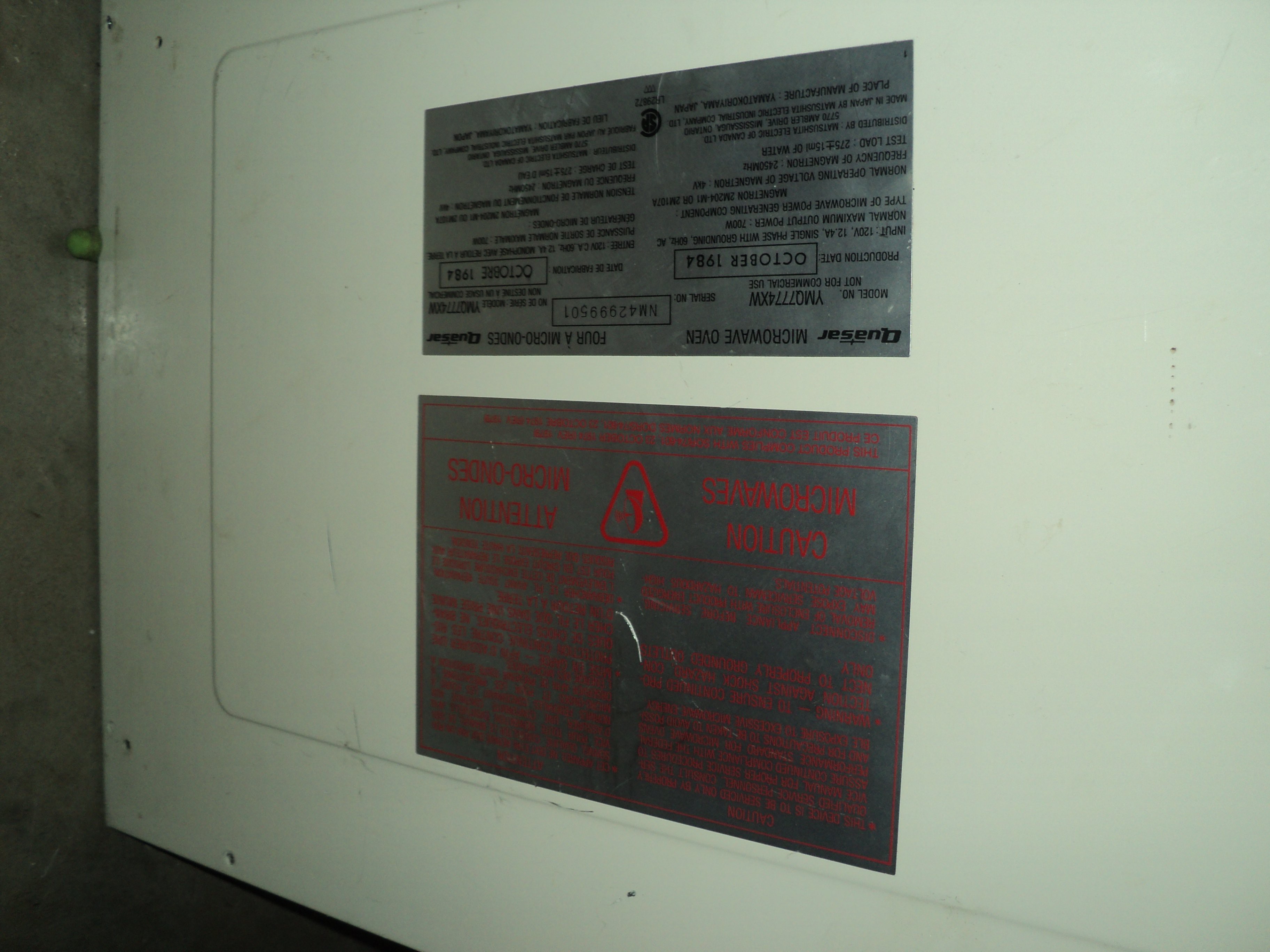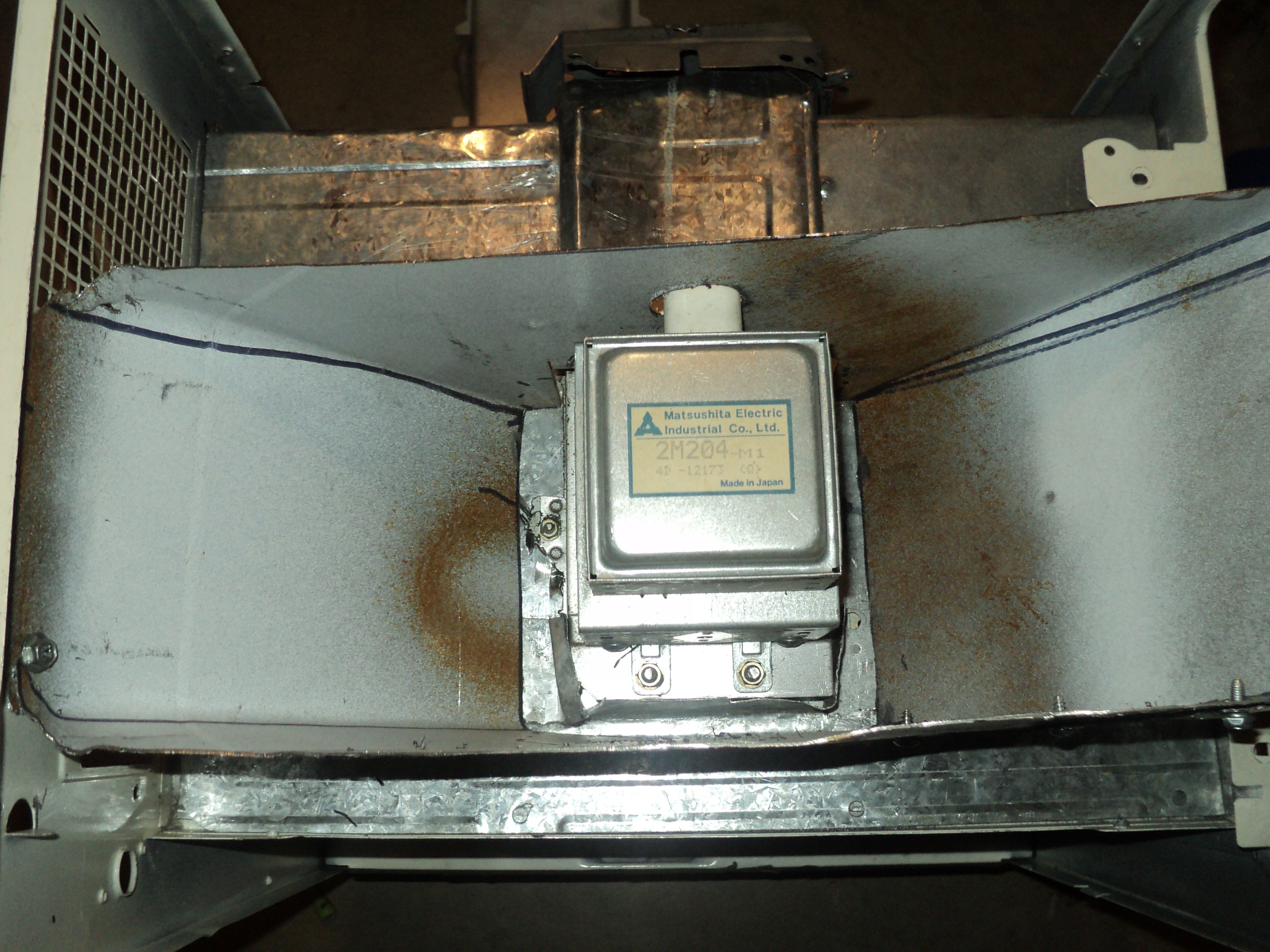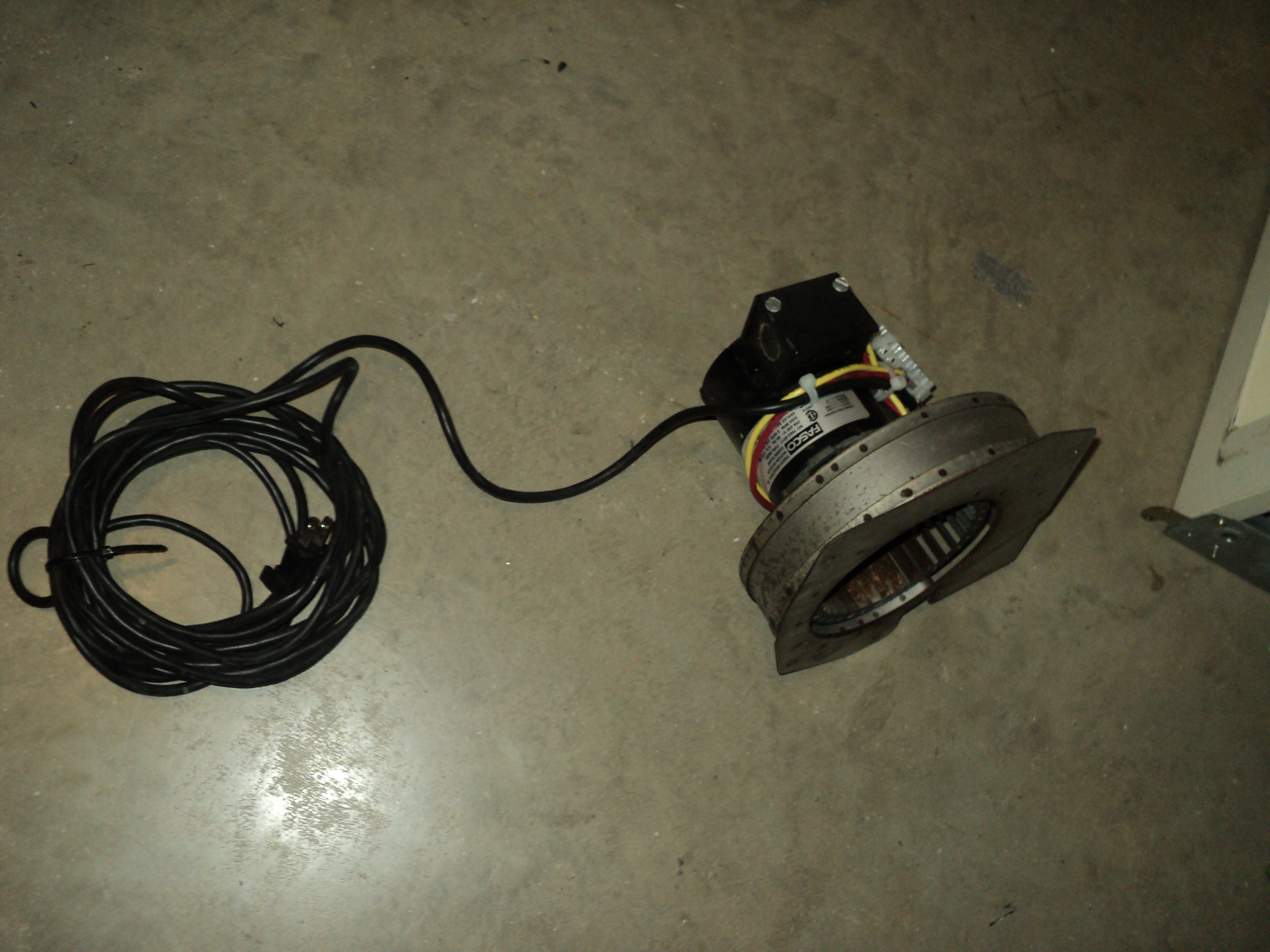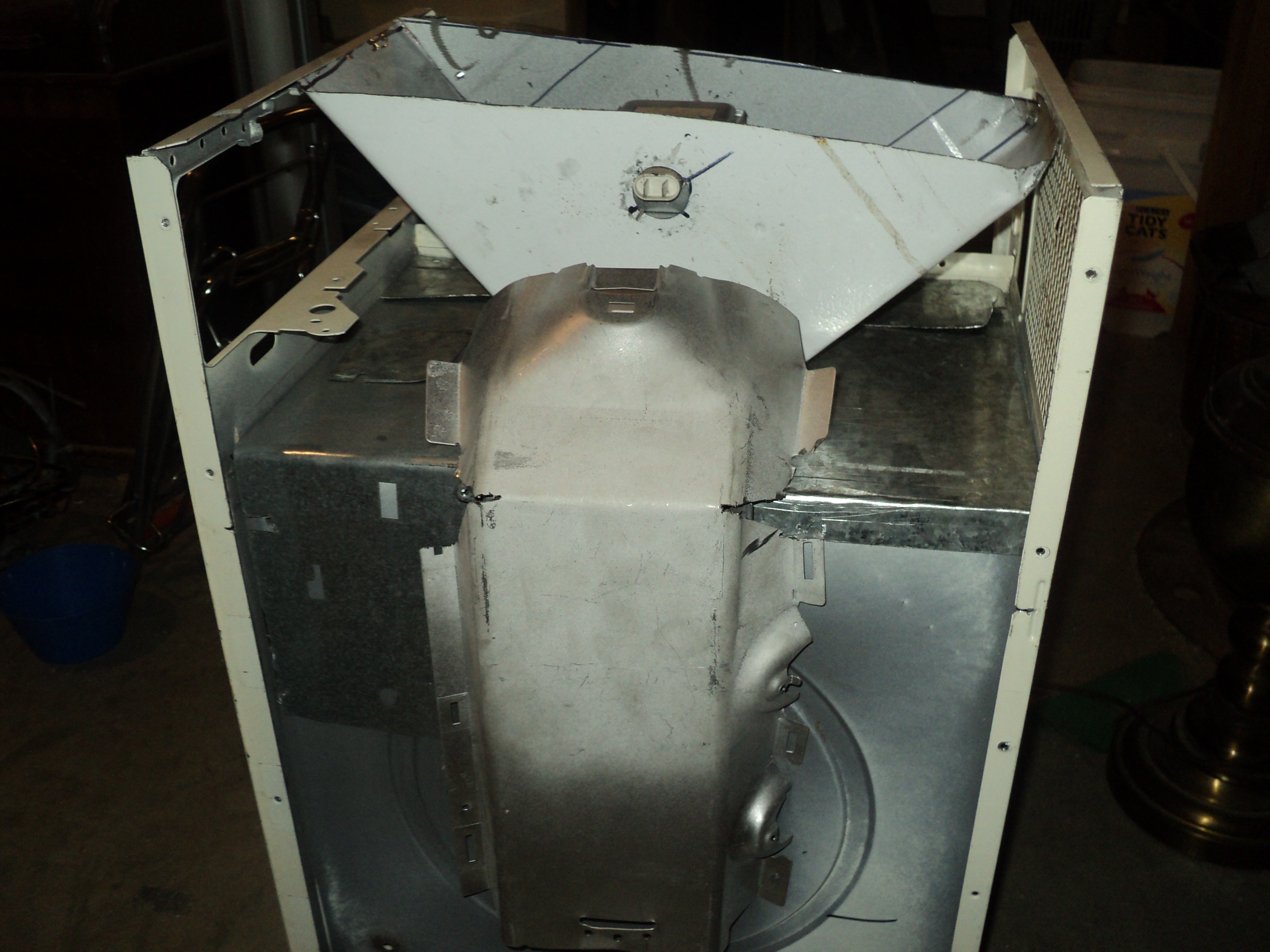-
pics
04/17/2017 at 01:59 • 0 commentsT
October 1984.. I was born in 1984, so I felt compelled to give this old girl a second chance at life. As for the danger warning, I have no concerns as I feel completely qualified.Magnetron with the added air duct around it. The empty voids in the case will all be filled with the waterglass perlite ceramic insulation, except for this duct area.
The blower fan, salvaged from a future shop dumpster. I believe it would have functioned in a furnace originally.
This picture shows the beefed up wave guide covering. As mentioned earlier, I hope this will add some level of protection from the wave guide being damaged or deformed. At the kind of temperatures I plan to reach with this machine, there are real possibilities of the original wave guide being completely destroyed, and in the event of such a malfunction, this added layer of metal will hopefully help to contain potentially harmful RF leakage. Obviously the dimensions of the added shielding don't match the actual wave guide within it, but that's alright. It's function is of safety and is not meant to propagate the signal in the event the actual wave guide fails in a catastrophic way. It will also act as a barrier to keep the insulation mixture from seeping into the waveguide during construction.
Almost all of the modern microwaves have wave guides that don't stretch beyond 4 or 5 inches long. This microwave has the magnetron located at the side of the machine like the modern ones do, but then it guides the microwaves down the side, across the bottom, and out the center of the cooking chamber. I really have no idea if this will be a benefit or a hindrance, but I seem to think it will make it less likely that the magnetron tip will get burnt up or damaged, which is what seems to happen in a lot of cases when people overdrive their microwaves. I'm making sure to leave access to the magnetrons mounting screws in the event it needs to be replaced at any time.
-
April 16, 2017 update
04/17/2017 at 01:29 • 0 commentsJust finished up the last of the sheet metal work. The sheet metal was added in an attempt to reinforce the microwave shell and wave guide already in place.
Structurally, the additional sheet metal acts to protect the wave guide from being dented or damaged. The wave guides dimensions are important, and I didn't want to change it from how it was originally designed.
I am using a microwave that was built in 1984. Microwaves as a consumer product was relatively new at this time, so I wasn't too sure they had all the kinks worked out of their design just yet. The added metal around the magnetron and waveguide hopefully will keep all the RF within the machine, and not astray throughout my laboratory.
The sheet metal surrounding the magnetron will function as an air duct to keep the magnetron from overheating. A blower will be mounted on the outside of the case and directed through this duct.
With all the sheet metal work out of the way, the next step is to add the insulation and the outer shell of the machine. I am using a combination of water glass, perlite, and broken up pieces of ceramic from things like old tiles and old coffee mugs.
I made the water glass this afternoon by mixing sodium hydroxide, silica gel, and water. It's simple to prepare, and if done right, the sodium hydroxide provides ample heat and you won't even need to mess around with a hot plate. I've done it enough times that I simply premix the lye and silica in a pyrex bowl, quickly pour in the water and put a very loose fitting lid on it and make my escape. Return in an hour to a finished product! Done wrong and you come back to a rock hard mess, or an incomplete reaction. If anyone's interested I can elaborate but I'll leave it at that for now.
Microwave Distiller / Reactor
Microwave mod: High efficiency still for ethanol, h2o, etc. Also melts metal, hosts supercritical microwave reactions, etc.
 localbroadcast
localbroadcast